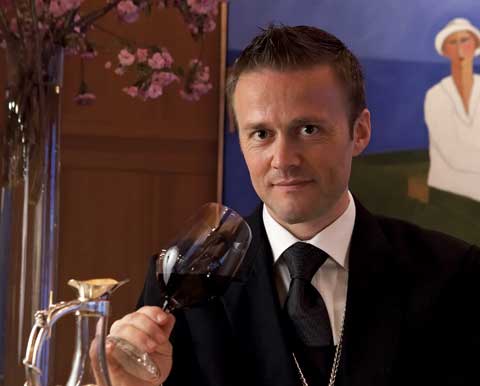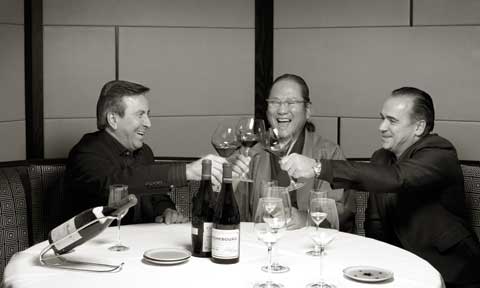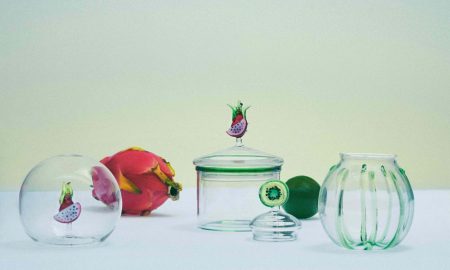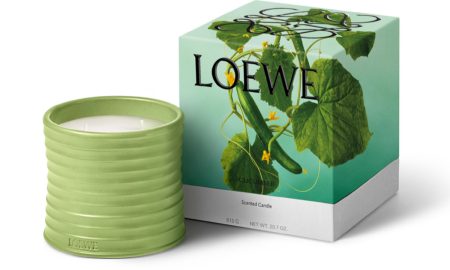Distinguishing your Pauillacs from Pomerols is one thing. Hiring an expert to spot the undiscovered liquid gems is another. While personal wine experts have been around since Aristotle walked the earth, today’s sommeliers offer more than just hard to find Chateau Margaux ’95. They school the willing in ways of God’s nectar.
Sommeliers have come a long way from the Roman times, when arbiter bibendis were entrusted with mixing water with wine. Depending on the day, their services aimed to enrich a meal or to poison the receiver. Indeed, the wine industry has become somewhat cutthroat. Sommeliers are a critical part of any fine dinning experience, and their finely tuned expertise renders a handsome financial reward. The competition for placement and recognition is fierce. Wine business is no longer a stodgy domain of the old and pompous. This luxury industry is driven by young, hip, competent men, and in few cases, women, whose goal is to take the pretention out of wine, giving this ancient profession a sexy and exciting new edge.
Of the thousands of contenders each year attempting to climb the ladder of wine titles, only four percent will pass the master test, and only 167 candidates have earned the master sommelier diploma.
For Courtney Cochran, a San Francisco-based personal sommelier, wine induction was postcard perfect. “I was living in Paris and met up with a pal and her host family, a renowned winemaking family, at their home in Burgundy, and had one of my all-time greatest lunches.” In true French style, the meal lasted for hours, largely due to significant wine consumption and lively conversation. Cochran realized that wine and food lend themselves nicely to a lifestyle of superior quality. She came back hooked and built her career around a bottle.
It wasn’t love at first taste for Aldo Sohm, the reigning “Best Sommelier in the World,” and wine director of New York’s famed Le Bernardin. “To be honest, wine tasted bitter and sour when I started to drink it,” Aldo admitted. Professional demand has redirected his attention to all that wine can be, and today Aldo can successfully blind taste his way through any region of any wine producing country.
Nevertheless, touching stories of wine discoveries amidst rolling hills of southern France or expert knowledge of barrel building help little in becoming a certified master sommelier. One must hit the books, and, above all, one must drink a lot. Very few wine enthusiasts will wear this honor of distinction. American Court of Master Sommelier, the St. Peter of wine gates, puts candidates through three rigorous, palate-forming tests before they can attempt to reach for the ultimate of all boozy accolades. The invitation only, gut-wrenching exam is tough, to say the least. Of the thousands of contenders each year attempting to climb the ladder of wine titles, only four percent will pass the master test, and only 167 candidates have earned the master sommelier diploma. According to the Court of Master Sommelier, level of difficulty, not a massive hangover, is to blame for the small number.
Those who parlay their hard earned titles into careers often become star attractions of many top rated restaurants. Sohm is a media darling who enjoys a rock star status, complete with groupies to boot. So there is no surprise that personal sommeliers, without the cushy safeguard of an established restaurant, have to work harder to build equal name recognition. As their restaurant counterparts deal with placing orders, predicting trends, making sales quotas, and enthralling their subjects with witty conversations, personal wine stewards call upon psychology, etiquette, and event planning to create and maintain success. “The expectations of clients are incredibly high, and their needs very particular. In a word, it’s personal,” Cochran, who often feels the pressure of those expectations, confessed. Realizing the potential of this unique liaison befalls not only on purchasing racking components and establishing long term plans for collection. Clients, who will spend upwards of hundreds of thousands of dollars on a wine cellar, want to get their money’s worth. Wines that represent a fantastic value at a lower price point are as sought after as bottles that collectors keep for those special life moments.
Sally Kirk, whose Jupiter, Florida, home boasts an envy-worthy cellar, gets a kick out of serving inexpensive yet entirely respectable bottles that her personal sommelier turned her onto. Her “cave” is a custom-made, high-tech, beautifully finished room, where thousand-dollar vintages cohabitate in perfect synergy with young wines awaiting to mature. One easily deduces that her eclectic and incredibly well-stocked cellar, which took a year to build, is the showpiece of Kirk’s home. Charlie Haile, the head designer for Wine Cellar Innovations, a leading designer of wine cellars and wine racks, understands the passion behind such a grand, and seemingly frivolous, investment. “Bringing home a truly exceptional wine is like bringing home your baby,” he explains. “You want to provide it an environment that is safe and secure and where it can develop and grow into all that it has the potential to become.”
Ironically, if a sommelier is as good of a guru as he is of a wine expert, the collector will develop a palate and confidence, eventually cutting the cord that binds them. But the good news for the wine industry, and those making a very nice living because of it, is that it is growing, thus creating many guidance-seeking enthusiasts in need of council. According to the Wine Market Council, by the year 2012, the U.S. will be world’s No. 1 wine consuming nation. That is a lot of pouring! And if Aldo is right, the aficionados will be younger and more diverse. “I’ve noticed that people interested in wine are excited and well versed, and any notion of elitism is dispelled by the multicultural, multigenerational consumer I deal with everyday. That’s good news for my business, because it challenges us. As sommeliers we have to compete for their attention with bottles that are good and well priced.” Mr. Sohm, we’ll drink to that!

























